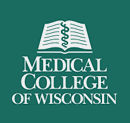预约演示
更新于:2025-05-07
Refractory Severe Aplastic Anemia
难治性重度再生障碍性贫血
更新于:2025-05-07
基本信息
别名 Refractory Severe Aplastic Anemia |
简介 Severe aplastic anemia that is resistant to treatment. |
关联
13
项与 难治性重度再生障碍性贫血 相关的药物作用机制 TPO receptor激动剂 |
非在研适应症- |
最高研发阶段批准上市 |
首次获批国家/地区 美国 |
首次获批日期2023-11-29 |
靶点- |
作用机制 干细胞替代物 |
在研机构 |
原研机构 |
最高研发阶段批准上市 |
首次获批国家/地区 美国 |
首次获批日期2023-04-17 |
作用机制 TPO receptor激动剂 |
在研机构 |
原研机构 |
非在研适应症 |
最高研发阶段批准上市 |
首次获批国家/地区 中国 |
首次获批日期2021-06-16 |
99
项与 难治性重度再生障碍性贫血 相关的临床试验NCT05757310
A Pilot Study to Evaluate the Safety and Feasibility of Induction of Mixed Chimerism in Severe Aplastic Anemia Patients With COH-MC-17: A Non-Myeloablative/ Reduced-Intensity, Conditioning Regimen and CD4+ T-Cell-Depleted Haploidentical Hematopoietic Transplant
This phase I trial evaluates the safety and feasibility of using a reduced-intensity regimen of cyclophosphamide, pentostatin, and anti-thymocyte globulin prior to a CD4+ T-cell depleted haploidentical hematopoietic cell transplant (haploHCT) for the treatment of patients with severe aplastic anemia that does not respond to treatment (refractory) or that has come back (recurrent). Cyclophosphamide is in a class of medications called alkylating agents. It works by damaging the cell's deoxyribonucleic acid. It may also lower the body's immune response. Pentostatin blocks a protein needed for cell growth. Anti-thymocyte globulin is an immunosuppressive drug can destroy immune cells known as T-cells. HaploHCT transfers blood-forming stem cells from a healthy partially-matched donor to a patient. Administering a regimen of cyclophosphamide, pentostatin, and anti-thymocyte globulin before haploHCT may help make room for the new, healthy cells and may reduce the risk of graft versus host disease.
开始日期2024-11-15 |
申办/合作机构 |
NCT06517641
A Phase II Trial of Non-Myeloablative Conditioning and Transplantation of Haploidentical Related, Partially HLA-Mismatched, or Matched Unrelated Bone Marrow for Newly Diagnosed Patients With Severe Aplastic Anemia
BMT CTN 2207 will investigate the use of marrow transplantation for treatment of severe aplastic anemia that has not previously been treated.
开始日期2024-09-01 |
申办/合作机构 |
NCT06516484
Ropustin for Refractory Aplastic Anaemia After Radiotherapy - a Single-centre, Prospective, Open-label, Single-arm Study
To investigate the efficacy and safety of roprostin in the treatment of refractory AA after radiotherapy.
开始日期2024-07-30 |
申办/合作机构 |
100 项与 难治性重度再生障碍性贫血 相关的临床结果
登录后查看更多信息
100 项与 难治性重度再生障碍性贫血 相关的转化医学
登录后查看更多信息
0 项与 难治性重度再生障碍性贫血 相关的专利(医药)
登录后查看更多信息
377
项与 难治性重度再生障碍性贫血 相关的文献(医药)2024-12-03·Blood Advances
Mitani K, Lee JW, Jang JH, et al. Long-term efficacy and safety of romiplostim in refractory aplastic anemia: follow-up of a phase 2/3 study. Blood Adv. 2024;8(6):1415-1419.
Article
2024-12-01·Bone Marrow Transplantation
Accurate donor and recipient selection and a short time to transplant offer excellent outcomes in upfront hematopoietic stem cell transplantation from matched unrelated donors for pediatric severe aplastic anemia and refractory cytopenia of childhood. A study of the Spanish Pediatric Group for Hematopoietic Cell Transplantation and Cell Therapy (GETH-TC)
Letter
作者: Bueno, David ; Quintero, Victor ; Gonzalez-Vicent, Marta ; Diaz-de-Heredia, Cristina ; Verdu, Jaime ; Lopez-Duarte, Monica ; Fuentes, Carolina ; Alonso, Laura ; Uria-Oficialdegui, M Luz ; Panesso, Melissa ; Murillo-Sanjuan, Laura ; Gomez, Graciela ; Trabazo, Maria ; Benitez-Carabante, M Isabel
2024-12-01·Experimental Hematology
Efficacy and safety of avatrombopag in combination with standard immunosuppressive therapy for severe aplastic anemia
Article
作者: Yuan, Weiping ; Liang, Weiru ; Shi, Jun ; Ye, Lei ; Peng, Guangxin ; Yang, Yang ; Zhang, Fengkui ; Zhang, Li ; Zhou, Kang ; Jing, Liping ; Zhao, Xin ; Li, Yuan ; Fan, Huihui ; Yang, Wenrui ; Li, Jianping ; Xiong, Youzhen
分析
对领域进行一次全面的分析。
登录
或

Eureka LS:
全新生物医药AI Agent 覆盖科研全链路,让突破性发现快人一步
立即开始免费试用!
智慧芽新药情报库是智慧芽专为生命科学人士构建的基于AI的创新药情报平台,助您全方位提升您的研发与决策效率。
立即开始数据试用!
智慧芽新药库数据也通过智慧芽数据服务平台,以API或者数据包形式对外开放,助您更加充分利用智慧芽新药情报信息。
生物序列数据库
生物药研发创新
免费使用
化学结构数据库
小分子化药研发创新
免费使用




